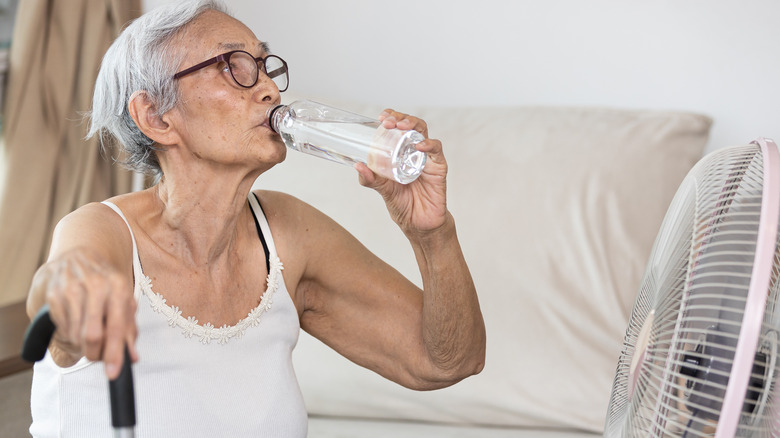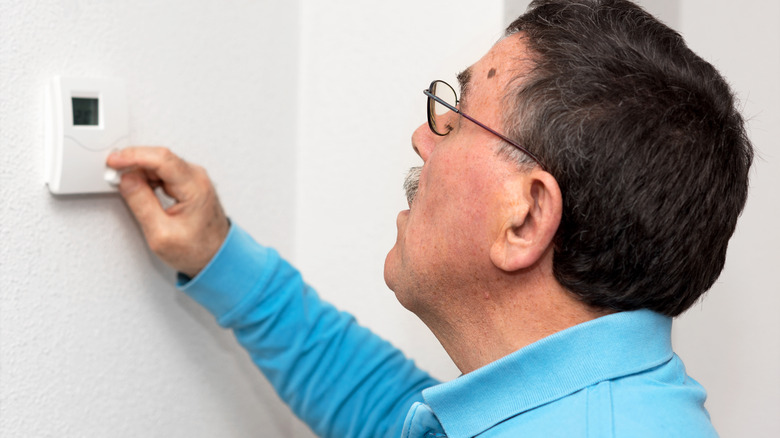As Heat Waves Across The US Continue, Here's How You Can Help Older Adults Stay Safe
Over the weekend, CNN reported that over 90 million people in the U.S. were under heat advisories as temperatures in some areas climb well into the high 90s. These dangerously hot temperatures, combined with levels of humidity, have temperatures feeling as high as 100 degrees Fahrenheit or more in certain regions across the country. These conditions can pose significant health risks, especially for adults over the age of 65, according to experts at the U.S. Centers for Disease Control and Prevention (CDC).
Dr. Angela Catic, an assistant professor at Baylor College of Medicine in Houston, explains in a college news release what factors contribute to older adults' risk for heat-related illness (per HealthDay). "As we get older, our bodies don't self-regulate temperature as well as when we were younger. This is due to physiological changes, medical issues and prescription medications, which can interfere with regulating our body temperature and prevent perspiring, which helps us cool down," Dr. Catic states.
While hypothermia is a condition related to severe cold, hyperthermia pertains to the health risks of excessive heat. The National Institutes of Health (NIH) explains that heatstroke, heat cramps, heat edema, heat exhaustion, and heat syncope are all heat-related illnesses that fall under the umbrella of hyperthermia. In response to these recent weather conditions, experts are sharing their tips as to how caretakers can help ensure their loved ones stay safe and healthy in the midst of the soaring summer heat.
Keeping older adults cooled down
Be on the lookout for symptoms of heat-related illness such as increased heart rate, heavy sweating or no sweating whatsoever, muscle cramps, fatigue or dizziness, nausea, red hot skin, or skin that's cold to the touch (via HealthDay). "If they're darker-skinned, they may look darker than their normal color. If they have lighter skin, they may get very red and pink in the face," Dr. Sharon Brangman, the chair of the department of geriatrics at SUNY Upstate Medical University, tells The New York Times.
If an older adult becomes affected by the heat, promptly move them to a cool environment. Have them drink water, juice, or other non-caffeinated clear fluids. Remove extra layers of clothing and apply cool water to the forehead, wrists, and ankles. If they're vomiting or showing signs of heatstroke, or symptoms worsen or last longer than an hour, seek prompt emergency care (per CDC).
Experts emphasize the importance of prevention. Per HealthDay, Dr. Catic suggests older adults remain in an air-conditioned environment such as a church, library, or family member's house if AC isn't available in their own home. If they have air conditioning, it's still a good idea to keep curtains closed, turn on fans, and limit use of heat-generating appliances. Encourage them to drink lots of fluids and reduce time spent outdoors in heat to no more than a few minutes. When they go outside, encourage them to wear sunscreen, loose and light-colored clothing, and a wide-brimmed hat that allows airflow.


